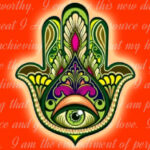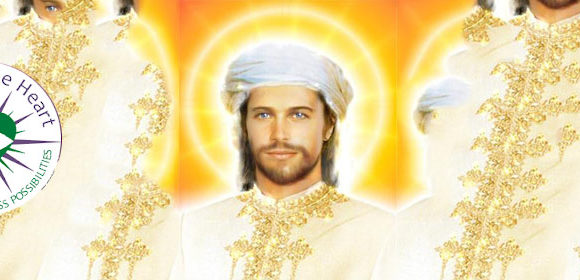Across time and space, human beings have looked to the stars, the earth, and within themselves in search of the Divine. While spiritual paths may differ in language, ritual, and theology, there is a remarkable unity in how cultures express their understanding of the sacred. At the heart of this unity lie symbols. Timeless visual expressions of spiritual truths that transcend words.
Symbols are the language of the soul. They awaken ancient memories, stir intuition, and connect us with dimensions beyond the physical. For seekers on the path of spiritual awakening, exploring these universal symbols of divinity can offer deep insight, not just into global traditions, but into the shared fabric of human consciousness.
Why Symbols Matter on the Spiritual Path
Symbols are not mere decorations or cultural relics. They are vibrational blueprints, living archetypes that carry energetic signatures. When approached with reverence and awareness, symbols can act as portals to divine understanding, anchoring abstract spiritual truths into tangible form.
Carl Jung, the Swiss psychologist and mystic, called them the “language of the unconscious.” He believed that symbols arise from the collective unconscious, speaking to all people regardless of culture or religion. For the spiritual seeker, they are mirrors of the inner world, tools for self-inquiry, reflection, and connection to the sacred.
Let us explore some of the most powerful and universal symbols of divinity found across various cultures.
-
The Circle (or Mandala)
The circle is perhaps the most primal of all sacred symbols. It has no beginning and no end, representing eternity, unity, and wholeness. In many traditions, it symbolizes the Infinite, the divine source from which all life flows.
In Hinduism and Buddhism, mandalas are intricate circular designs used in meditation to centre the mind and connect with higher consciousness. In Christianity, the halo surrounding saints reflects divine radiance. In Native American traditions, the Medicine Wheel represents the cycles of life and the harmony of all things.
To contemplate the circle is to remember that we are not separate from the universe—we are part of its sacred geometry.
-
The Lotus Flower
The lotus is a sacred symbol in Eastern spirituality, particularly within Hinduism and Buddhism. It grows in muddy waters yet rises each morning to bloom in pristine beauty. This journey mirrors the soul’s path, from the darkness of ignorance to the light of enlightenment.
For seekers, the lotus is a reminder that no matter our past or present challenges, our divine nature remains untouched. It speaks to the possibility of awakening, of transcending the world’s illusions to discover our true Self.
In Egyptian mythology, the lotus is also associated with rebirth, as it was said to rise from the primordial waters to birth the sun.
-
The Tree of Life
Appearing in cultures as diverse as Celtic, Norse, Mayan, Jewish, and Kabbalistic traditions, the Tree of Life symbolizes the interconnectedness of all beings. Its roots dig deep into the Earth, while its branches stretch toward the heavens, a perfect image of the balance between spirit and matter.
In Kabbalah, the Tree of Life represents the structure of the divine and the journey of the soul through different levels of consciousness. In Norse mythology, Yggdrasil is the great cosmic tree that links all realms of existence.
For the modern spiritual seeker, the Tree of Life serves as a map for inner growth, reminding us that all life is deeply woven together.
-
The Eye
Found in many spiritual traditions, the Eye is a powerful symbol of divine awareness and inner vision.
- In Ancient Egypt, the Eye of Horus was a symbol of protection, healing, and spiritual insight.
- In Hinduism, the Third Eye (Ajna chakra) is the seat of intuition and spiritual sight.
- In Islamic culture, the evil eye symbol, often depicted as a blue eye, is used to ward off negativity and preserve one’s spiritual purity.
The Eye reminds us to look not just outward, but inward, to see with clarity, wisdom, and discernment.
-
The Spiral
The spiral is found in the oldest cave art, on temple floors, and in natural patterns from seashells to galaxies. It is a symbol of evolution, expansion, and the inward journey of self-discovery.
Many indigenous cultures, particularly in the Americas and Celtic Europe, saw the spiral as a symbol of life’s cyclical nature and the soul’s eternal journey.
For those walking the spiritual path, the spiral reflects the reality that growth is not linear. We circle inward and outward in stages, always returning to the centre – our divine essence.
-
The Cross
Though most closely associated with Christianity, the cross is a much older symbol, representing the intersection of spirit and matter, the seen and unseen.
In ancient cultures, the four arms of the cross represented the four directions, the four elements, or the balance between the divine masculine and feminine. In its many variations, the ankh of Egypt, the Celtic cross, or the medicine cross, it serves as a powerful symbol of life, sacrifice, and transcendence.
To meditate on the cross is to reflect on the integration of heaven and earth within us.
-
The Om Symbol (ॐ)
Om is considered the primordial sound of the universe in Hinduism, Buddhism, and Jainism. The visual symbol represents the triad of creation, preservation, and destruction, echoing the cycles of life itself.
For spiritual practitioners, chanting or contemplating Om connects the individual soul (atman) with the universal consciousness (brahman). It is a sacred vibration, a sonic bridge to the divine.
Final Reflections
As we journey through life seeking the truth, these universal symbols remind us that we are not alone. Across continents and centuries, mystics, shamans, sages, and seekers have all received the same message: the Divine is within, and all around us.
Symbols are invitations, whispers from the invisible realm, calling us to remember who we are. They do not belong to any one religion or culture; they belong to the soul. When meditated upon with an open heart, these sacred images become guides, pointing us home.
As you continue along your spiritual path, let these symbols be companions, signposts on the road to divine remembrance.








